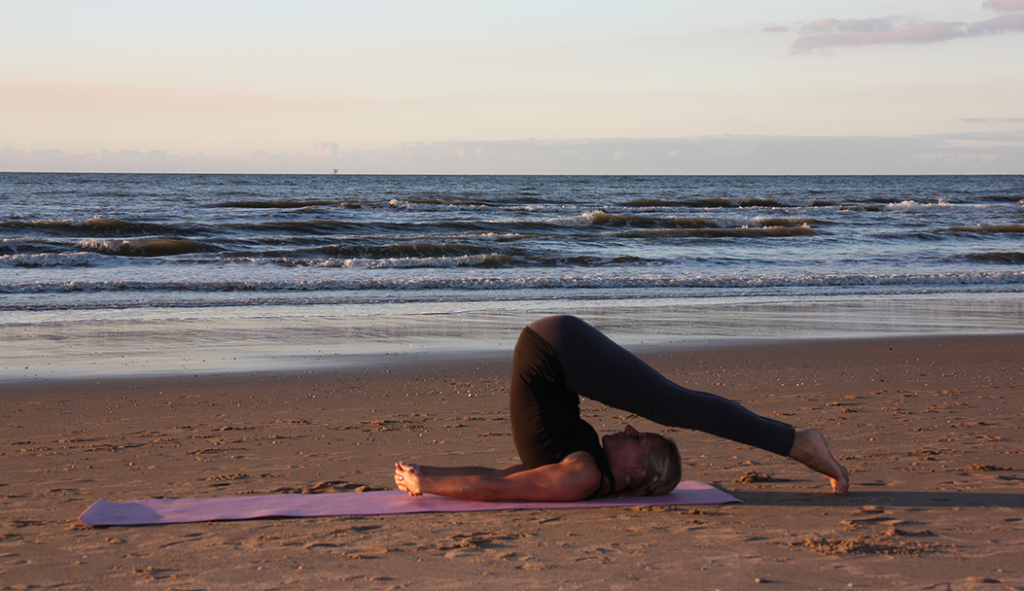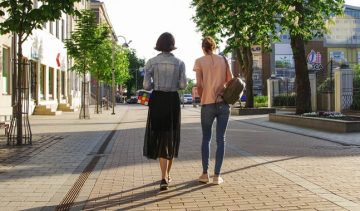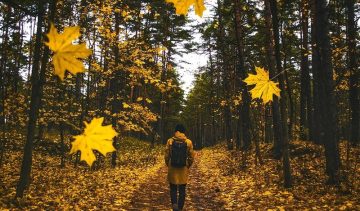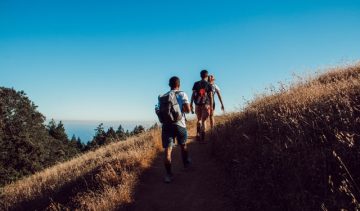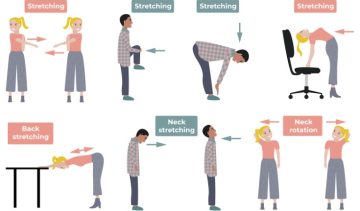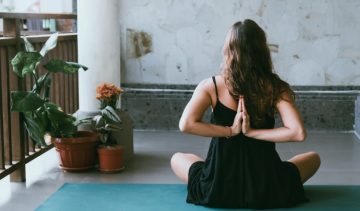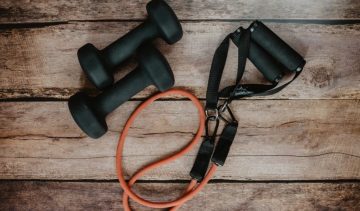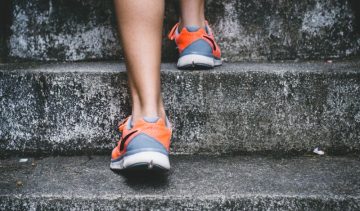Looking at this picture you might think “No, this pose can’t be good for me, I’m not flexible enough”. Logical, most people think that when they see the Plow pose. And yet everyone can do this pose when you gradually build up for it. The basis for this pose is in the preparatory poses. The warmer the body, the more flexible the muscles and joints, the easier the Plow is. In addition, there are all kinds of variations that allow you to do the Plow with more ease (and fun). These tips will help you.
What is the Plow posture?
This is a basic pose; an inverted supine position and forward bend. In yoga jargon this pose is called “Halasana”. Hala means “Plow”. There are many variations in this asana, although some may be pretty risky. The starting point is always doing what feels right; respect the body and the limits it indicates. In this pose, the (lower) back muscles, hamstrings, calf muscles, scholar muscle (just above the ankle), the triceps and the monk’s cap muscle (shoulder muscle) are stretched intensively. Stretching of the body is good because it brings back the natural length and suppleness of the body and the bloodstream and metabolism are stimulated. In the picture I have entwined my hands and stretched arms. Alternatively, the arms can also be stretched with the palms of the hands flat on the ground. When the toes do not touch the ground and the pressure on the lower back feels too much, it is best to put the hands on the lower back with elbows on the ground for support.
What is the effect of the Plow?
Halasana is a good pose to increase flexibility in the back muscles and hamstrings. In addition, it also has a positive effect on the muscles in your neck and shoulders and ensure that any tension that is there is reduced. The biggest challenge in this asana is being able to breathe freely. As a result of the reverse over bend, more pressure is placed on the diaphragm and organs, which reduces the freedom to breathe deeper. It is a matter of feeling how far you can bring your feet back to breathe freely. The goal is not that your toes touch the ground, that comes naturally with time. The focus is on the back and on breathing freely. To be able to do the Plow a good warm-up is required. That is why you will encounter this pose in a yoga class half way or towards the end of the class.
These tips help to do the Plow with more ease:
Tip 1 Preparation
Good preparation is important. Doing sun salutations several times makes the body, muscles and joints ready for this posture. Do at least 10 sun salutations when you do not do any other preparation poses. In yoga jargon we never say that we ‘do an pose’ but say we ‘come into the posture’. To get into the Plow, the (supporting) Shoulder stand and Bridge are nice preparation poses, where the second one gives the most challenge.
Tip 2 From the Shoulder position
If your toes do not touch the ground in the Plow, the Shoulder pose is the best position to start from. In this asana you have your hands on the lower back for support. On the exhale the toes point towards the face and the legs go straight and slowly forward. Try to keep the back straight as long as possible and first focus on the hamstrings. When you feel that you have reached your max, you hold your pose there. Remain a number of breaths in the pose. When the feet do touch the ground, gently stretch out the arms and place the palms on the floor. Feel the difference. If it feels comfortable, bring your hands together, intertwine the fingers and stretch the arms as far as possible while resting your hands on the floor. Bring the chin towards the chest to decrease pressure in the neck.
Tip 3 From the Bridge
In Halasana coming from the Bridge is more challenging and requires more of your arm muscles, especially the triceps. When you are in Bridge, the arms are stretched, fingers intertwined and the hands rest on the floor. You bring your body weight on one leg, for example the left. At the inhalation you stretch the right leg up and let it fall backwards, at the same time you push your arms against the ground. When the right toes are on the ground, let the left leg follows. Now also bring the chin to the chest to decrease pressure in the neck.
